
Background
Since optical fiber began to be used for business applications in the mid 1980s, it has been about 30 years. People now have enough to benefit from it. It is widely used worldwide, whether in a developed country or a developing country. However, it is a challenge for engineers to find a cost-effective fusion splicer. Although most people in the fiber optic industry have known what a fusion splicer is and its applications for many years. Nowadays, there are so many optic fusion splicer manufacturers and OEM services on the market that we are still confused about choosing the best fusion splicer provider.
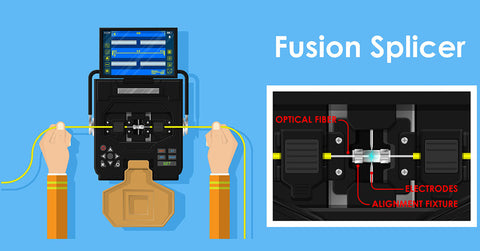
Fusion Splicer Basics
What does a Fusion Splicer do?
A fusion splicer is used for combining or splicing two optical fibers end-to-end via fusion. The objective here is to fuse the fibers together in such a way that no light is reflected or refracted, and have the spliced fiber be as strong as the regular fibers.
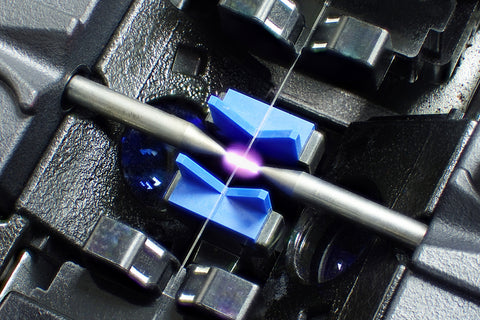
What is Fusion Splicer?
The fusion splicer is used for splicing two optical fibers end-to-end by fusion (sometimes we say, welding or heating). The goal is to fuse the two fibers together in such a way that light passing through the fibers is not scattered or reflected back by the splice, and so that the splice and the region surrounding it are almost as strong as the virgin fiber itself. The source of heat is usually an electric arc, but can also be a laser, or a gas flame, or a tungsten filament through which a current is passed. A good automatic fusion splicing machine (welding machine), which can work automatically and with more permanent connection compared with mechanical splice, with low-loss, high-strength joint. It is an indispensable tool for fiber OSP and indoor cable network installation.
What does a Fusion Splicer do?
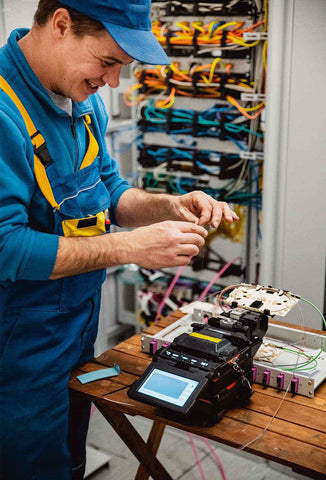
A fusion splicer is used for combining or splicing two optical fibers end-to-end via fusion. The objective here is to fuse the fibers together in such a way that no light is reflected or refracted, and have the spliced fiber be as strong as the regular fibers.
Types of Fusion Splicers
· Single Fiber Fusion Splicer: These Can Only Splice 2 Fibers At A Time. The fiber is stripped and cleaned and inserted into the machine. The same process is applied to the second fiber. The splicer can take up to 10 seconds to split the fibers and will also give an estimate of the loss of light. Single fiber splicers can splice fibers between 250 and 900-Micron, flat drop cables and splice on connectors.
· Mass Fusion Splicer: Mass Fusion Splicers Can Splice 1 To 12 Fibers At A Time. They are not as popular as single fiber splicers, but if you need to split more than one fiber at a time, they can be very efficient.
· Core Alignment Fusion Splicer: This Is The Most Commonly Used Fusion Splicer Technology. It uses light and image detection to look at the fiber cores to measure and monitor the core position while aligning the fiber cores. This gives a precise fiber alignment, giving a typical loss of only 0.02db. Although this technology is expensive, it is also powerful, flexible and efficient.
· Cladding Alignment Fusion Splicer: Basic Fusion Splicers Use Cladding Alignments To Line Up The Fibers. They sit in a V-groove and are lined up based on the outer diameter. This is a fast method of splicing and it is low cost, which is why it is usually used on low cost Fusion Splicers. Even if the outer diameters are aligned, it does not mean that the fibers are perfectly aligned, which leads to higher loss. As a low-cost solution, it also lacks the features of a higher-end splicer.
Applications
Fusion splicing is useful in any case where optical fibers are used. Uses such as telecommunications and networking, power transmission and sensors. All of these applications are improved with fiber optics, so having a fusion splicer will come in handy.

Prepare the fiber for splicing
· Clean Fibers.
· Strip Off Buffer Coating.
· Clean Bare Fiber With Proper Materials.
· Place Fibers Into The Guides In The Fusion Splicer And Clamp Into Place.
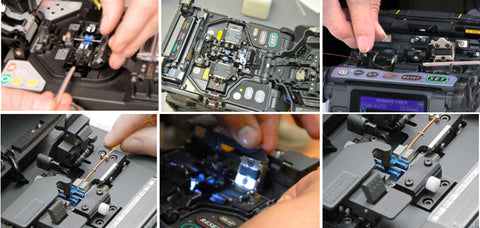
Fusion Splicing Process
· Choose The Program On The Splicer.
· The Splicer Should Show The Fibers Placed Inside Of It.
· Fibers Will Be Inspected, And Bad Fibers Will Be Rejected.
· Splicers Will Be Moved Into Position.
· Dirt Will Be Removed
· Fibers Will Be Preheated.
· Fibers Will Be Aligned.
· Fibers Will Be Fused By An Automatic Cycle That Feeds The Fibers Together At A Controlled Rate.
· When Completed The Splicer Will Give A Loss Estimate.
· A Permanent Splice Protector Will Be Attached.
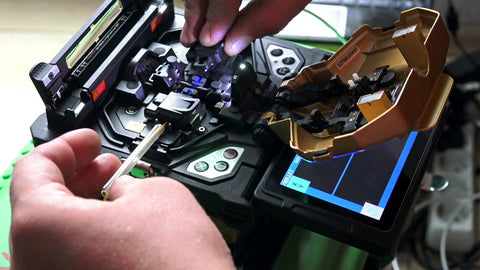
Tips for getting better fusion splicing results
1. When working with fiber optics, keep in mind that particles that are not visible to the naked eye can cause tremendous problems when working with fiber optics. Thoroughly and frequently clean your splicing tools. "Excessive" cleaning of your fiber and tools will save you time and money down the road.
2. Properly maintain and operate your fiber cleaver. The fiber cleaver is your most valuable tool in fiber splicing. A good fiber cleaver can perform a good cleave to the fiber core, which will increase the alignment speed for the fusion splicer and have a good fusion quality, which is low loss for the fiber.
3. Fusion parameters must be adjusted minimally and methodically (fusion splicing only). If you start changing the fusion parameters on the splicer, you may lose your desired setting as soon as there is a hint of a problem. Dirty equipment should be your first check and they continue with the parameters. Fusion time and fusion current are the two key factors for splicing. Different variables of these two factors can produce the same splice results. High current and low current lead to the same result as high current and low time. Make sure to change one variable at a time and keep checking until you find the right fusion parameters for your fiber type.
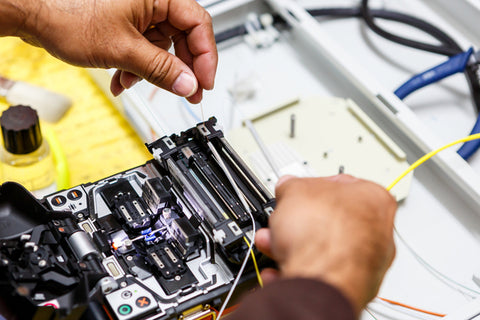
FAQ for choosing a fusion splicer
Q: What is the price of the Fusion Splicer?
A: Japan Fusion Splicer: Over $7,000
Korean Fusion Splicer: Over $5000
China Fusion Splicer: $3,000
Q: Optical fiber fusion splicer type:
A: single core fiber fusion splicer, ribbon fiber fusion splicer, special fiber fusion splicer
Q: List of fiber optic fusion splicer brands on the market?
A: Japan: AFL/FUJIKURA, SUMITOMO, FITEL (FURUKAWA), Korea: INNO, China: JILONG, DVP, etc.
Q: Which brand has a reputation around the world?
A: FUJIKURA is the best in the world at a high price.
Q: Different types of fusion splicer:
A: The principle of fusion splicer is the same. A single core optical fiber welding machine can fuse a single core every time; Fusion splicer for welding ribbon fiber, able to splice 2/4/6/8/12 cores once.
Summary
When choosing a splicer, all the factors mentioned in this article should be considered. Since there are so many splicer suppliers, choosing a reliable company becomes particularly important. One company that can help you decide which splicer is best for you is Splicermarket.com. Their supportive staff will help narrow the choice of equipment based on your specific needs and budget.


